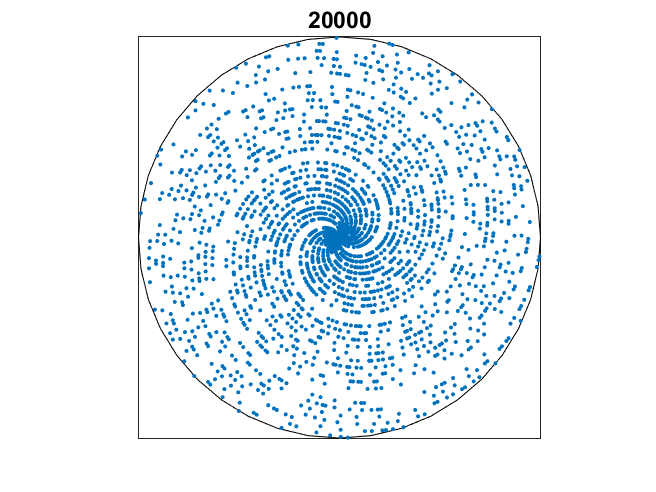
Inspired by Patsy and https://www.amazon.com/gp/product/B075JDVR53. type xmas_2019.m function xmas_2019 % Christmas greetings. set(gcf,'pos',[800 200 420 315]) clf ... 더 읽어보기 >>

Inspired by Patsy and https://www.amazon.com/gp/product/B075JDVR53. type xmas_2019.m function xmas_2019 % Christmas greetings. set(gcf,'pos',[800 200 420 315]) clf ... 더 읽어보기 >>

My colleagues are looking for a matrix to be used in a new benchmark. They've come to the right place.... 더 읽어보기 >>

Line plots with a color order from one of our color maps are useful, and pretty.... 더 읽어보기 >>

I am working with Indika Rajapakse and Steve Smale to investigate the stability of the dynamic system describing Kuramoto oscillators. Indika and Steve are interested in Kuramoto oscillators for two reasons; the self synchronization provides a model of the cells in a beating heart and the dynamic system is an example for Morse-Smale theory. I am personally interested in the Kuramoto model as it relates to deep brain stimulation (DBS) for open-loop control of human movement disorders. My kuramoto program demonstrates both stable and unstable critical points. Roundoff error may destabilize an unstable critical point.... 더 읽어보기 >>

Today's post was inspired by a YouTube video, Why do prime numbers make these spirals?, on the channel 3Blue1Brown, created by Grant Sanderson. In my opinion this is the best math channel on YouTube. He has beautiful graphics and superb exposition. I recommend you take a look, if you haven't already.... 더 읽어보기 >>

I have learned a lot more about Kuramoto oscillators since I wrote my blog post three weeks ago. I am working with Indika Rajapakse at the University of Michigan and Stephen Smale at the University of California, Berkeley. They are interested in the Kuramoto model because they are studying the beating of human heart cells. At this point we have some interesting results and some unanswered questions.... 더 읽어보기 >>

Fireflies on a summer evening, pacemaker cells, neurons in the brain, a flock of starlings in flight, pendulum clocks mounted on a common wall, bizarre chemical reactions, alternating currents in a power grid, oscillations in SQUIDs (superconducting quantum interference devices). These are all examples of synchronized oscillators.... 더 읽어보기 >>

The QR algorithm is one of the world's most successful algorithms. We can use animated gifs to illustrate three variants of the algorithm, one for computing the eigenvalues of a nonsymmetric... 더 읽어보기 >>

I have just returned from the ICIAM2019 conference in Valencia, Spain. It was a huge conference -- 4,000+ attendees, dozens of prize and invited talks, hundreds of parallel minisympsia. I gave a talk in a two-part minisymposium organized by Nick Higham and Rob Corless. I outlined the first part of the talk in this blog a month ago. This post outlines the second part, which was about Hadamard matrices. Some of it is taken from a post in this blog five years ago.... 더 읽어보기 >>

(This is a reprint of the second ever Cleve's Corner from the Winter 1990 MathWorks Newsletter).The other day at lunch with a couple of other MathWorks people, I posed the following... 더 읽어보기 >>